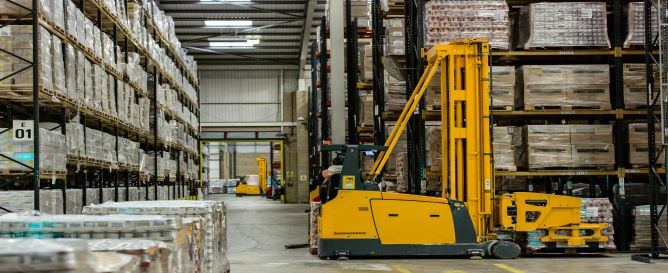Ways to resolve Warehouse WiFi Issues
Thermosensor Calibration
September 12, 2018
Staying Frozen but Vitrified
November 14, 2018We have all had issues with WiFi at some point in our use of technology. From attempting to connect to a wireless printer to bringing up video streaming service on our smart TV.
In a professional warehouse setting, having all your wireless business devices able to connect one to another is extremely important in the warehouse environment is dependent on connectivity to maintain accountability of materials and wireless temperature monitoring.
Resolving issues such as loss of connectivity or signal interference are crucial to business operations. There are three places issues typically originate: the router; antenna; and issues with the warehouse itself.Let us talk about the router, or better referred to as the access point, the device that allows wireless devices to communicate to computers and other wireless devices.

First, updating the firmware on both the wireless adapter in the computer and the access point can resolve some of the small problems that arise over the life of the device.
Second, setting the power levels on high does not always resolve poor coverage or network speeds. Considering the size of a warehouse you may not want something connecting to the far side of the warehouse when there is an access point closer to the device. Managing coverage and balancing power helps.
Third, most WiFi networks are set to use the 2.4GHz radio spectrum that uses only three channels 1, 6, and 11. To avoid interference with each other all three different access points should be on separate channels to avoid interference.
Fourth, understanding how many access points are needed is important. Having too many or too few can be just as detrimental to performance. Having the right number of access points can be determined by using a wireless network design. Some companies handle this for you and implement that design.
Understanding antenna issues can be the simplest way to resolve some issues. Through the antenna, the WiFi signal can reach out and connect devices.
Consider the type of antenna required whether directional antenna made for focusing the signal in one direction or omnidirectional antennas for coverage in all directions. Placement is the top concern, omnidirectional antennas are like a bubble of coverage you need to consider keeping connected devices within the bubble to get coverage.
With a directional antenna you need to make sure that the antenna is pointing at the devices. Some access point has more than one antenna so it’s important to make sure the antennas are aligned in a way not to overlap or have gaps in signal coverage.
Another consideration is the warehouse itself. In some warehouses, equipment like Forklifts and stock pickers often have wireless devices and these devices are placed in the same metal cage as the operator so the signal has nowhere to go and can’t reach the access point. Adding an antenna outside of metal cages will allow connectivity with access to the wireless signal. Also, the materials being stored within the warehouse can hinder the signal getting to and from the access point and devices.
Crucial business operational problems can be resolved such as loss of connectivity or signal interference by considering the three places issues typically originate: the router; antenna; and with the warehouse itself. It’s important to consider wireless network design for your wireless network and to use that design to maintain connectivity and performance so your business can thrive.
